
This resource provides training for students that will help them identify emotional triggers and then handle these triggers in socially acceptable ways.
- Subject:
- 21st Century Skills
- Material Type:
- Lesson Plan
- Date Added:
- 08/07/2023

This resource provides training for students that will help them identify emotional triggers and then handle these triggers in socially acceptable ways.
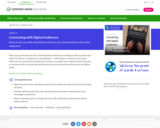
How can we use code-switching to enhance our communication with online audiences? What you say, and how you say it, often depends on whom you're talking to, both in person and online. The person or people you're chatting with -- and the apps or websites you're using -- affect how we communicate. Remind your students to consider their audience before they post or comment online, and help them build community and communicate effectively in the digital world. Approximately 50 mins.
LESSON OBJECTIVES: Apply the idea of code-switching to how they use phones and other devices in and outside of school. Consider different ways that code-switching online can make communication more meaningful and effective. Write an example post or message that uses code-switching to communicate with an online audience.
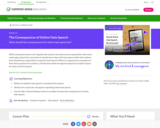
What should the consequences for online hate speech be? While some governments can't regulate hate speech, laws allow private organizations like social media apps and private universities to decide how to deal with hate speech within their spheres. How should these organizations respond to hate speech? What is an appropriate consequence? Pose these questions for students, and help them think through the importance of both respect for others and free speech. Approximately 50 mins.
LESSON OBJECTIVES: Reflect on whether hate speech is considered free speech. Identify the reasons for and against regulating online hate speech. Use the Take a Stand thinking routine to consider the potential consequences of online hate speech.

A quick guide to help you determine the relevance and authority of a resource.
![The Cosmos [Lesson 3 of 20]](https://openspace.infohio.org/static/newdesign/images/materials/default-thumbnail-index.png)
Lesson 3 is a step-by-step guide for a classroom activity on Sun Ra's art and music. It starts with a 13-minute video of a Sun Ra interview, where students take notes and share their findings with a partner. The lesson then moves on to exploring visuals in Art on Saturn, the Space Is the Place film trailer, and The Last Man in the Cosmos. Finally, students are tasked with a design challenge where they imagine life on Jupiter's moon Europa and create a 15-second clip to show it. There is a 20-minute work time recommended, and students can publish their clips on Instagram with the provided tags.
Estimated time required: 1-2 class periods.
Technology required for this lesson: Augmented Reality, Internet Connectivity, Laptop/Desktop, Smartphone, Tablet, Tablet or Smartphone.
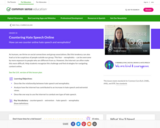
How can we counter online hate speech and xenophobia? As humans, we thrive on social connections and group associations. But this tendency can also lead us to be suspicious of people outside our group. This fear -- xenophobia -- can be overcome by more exposure to people who are different from us. However, the internet can often make this more difficult. Help students recognize this challenge and find strategies for navigating content online. Approximately 50 mins.
LESSON OBJECTIVES: Describe the relationship between hate speech and xenophobia. Analyze how the internet has contributed to an increase in hate speech and extremist views. Describe one way to use the internet to combat one type of hate speech.

This tutorial offers tips, techniques, samples, and a cover letter template to help you get noticed by prospective employers.
Lessons include: (1) Crafting Your Cover Letter. Use these cover letter tips to get prospective employers to notice your job application.
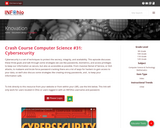
Cybersecurity is a set of techniques to protect the secrecy, integrity, and availability. This episode discusses these three goals and talk through some strategies we use like passwords, biometrics, and access privileges to keep our information as secure, but also as accessible as possible. From massive Denial of Service, or DoS attacks, to malware and brute force password cracking there are a lot of ways for hackers to gain access to your data, so we’ll also discuss some strategies like creating strong passwords, and , to keep your information safe.
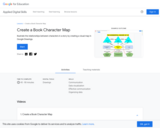
Illustrate the relationships between characters in a story by creating a visual map in Google Drawings. Time to complete: 45-90 minutes
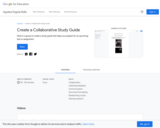
Work in a group to create a study guide that helps you prepare for an upcoming test or assignment. Time to complete: 45-90 minutes
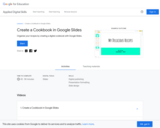
Organize your recipes by creating a digital cookbook with Google Slides. Time to complete: 45-90 minutes
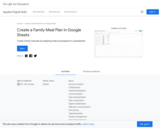
Create a family meal plan by assigning meals and preparers in a spreadsheet. Time to complete: 45-90 minutes
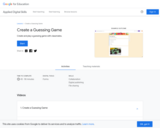
Create and play a guessing game with classmates. Time to complete: 45-90 minutes
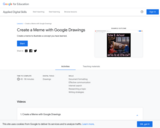
Create a meme to illustrate a concept you have learned. Time to complete: 45-90 minutes
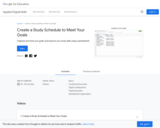
Organize and track your goals, and improve your study skills using a spreadsheet. Time to complete: 45-90 minutes

Tools and resources to assist in introducing educators to Open Space

Welcome to Unit 3 in the Immersive Media Course, where we will return to Planet Earth and students will focus on making eye-catching, futuristic presentations in Adobe Spark (Chapter 1), designing, and modeling virtual worlds with CoSpaces (Chapter 2), and creating a final project to solve some of Earth’s sustainability challenges (Chapter 3). In this lesson, students will design their own galactic clothing logo using Adobe Spark.
Estimated time required: 1-2 class periods.
Technology required for this lesson: Design Software, Laptop/Desktop, Tablet.

In this lesson, students will create a “personal brand” video using Adobe Spark! If they have completed the previous lesson on Adobe Spark, they can include their logo in the personal brand video.
Estimated time required: 1-2 class periods.
Technology required for this lesson: Camera, Laptop/Desktop, Smartphone, Tablet, Video Editing Software.
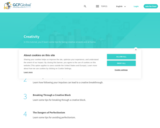
In this tutorial, you'll learn some tips for being creative at work and at home.
Lessons include: (1) Everyone Can Be Creative. Learn how you can use creativity in your day-to-day life. (2) Following Your Creative Impulses. Learn how following your impulses can lead to a creative breakthrough. (3) Breaking Through a Creative Block. Learn some tips for breaking through a creative block. (4) The Dangers of Perfectionism. Learn some tips for avoiding perfectionism. (5) What is Art?. Art can take many different forms. But what exactly is art? (6) How to Become a Better Collaborator. Learn how to improve your collaboration skills with others.
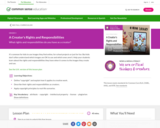
What rights and responsibilities do you have as a creator? It's common for kids to use images they find online, for school projects or just for fun. But kids don't often understand which images are OK to use and which ones aren't. Help your students learn about the rights and responsibilities they have when it comes to the images they create and use. Approximately 45 mins.
LESSON OBJECTIVES: Define "copyright" and explain how it applies to creative work. Describe their rights and responsibilities as creators. Apply copyright principles to real-life scenarios.